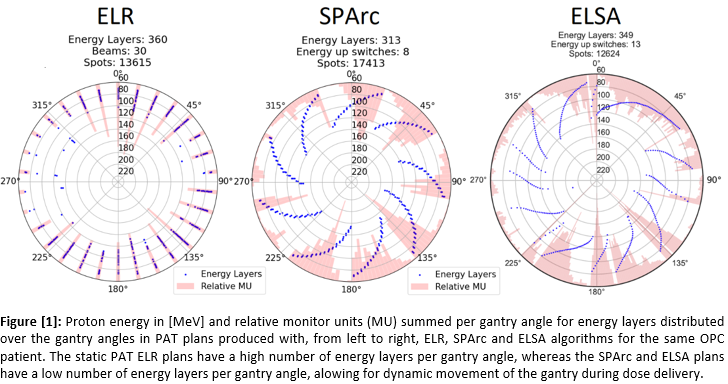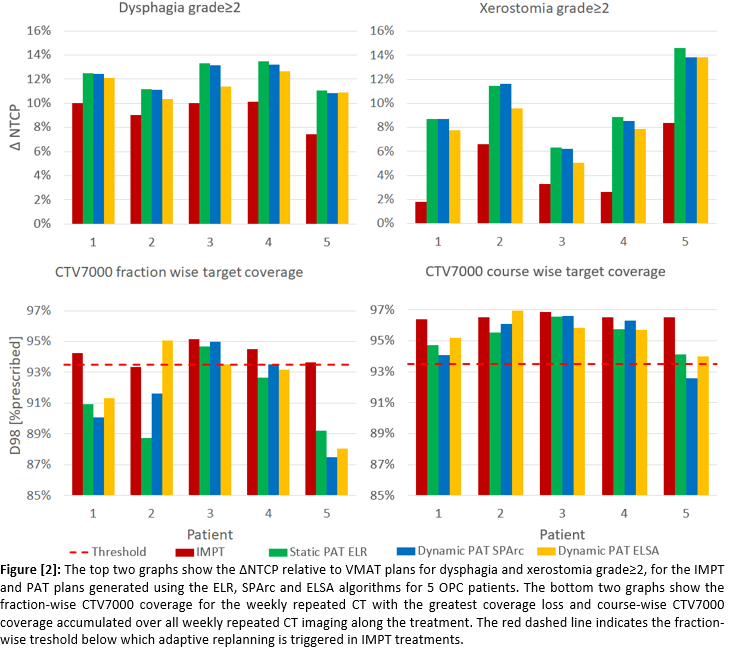Comparison of static and dynamic proton arc treatment planning algorithms in oropharyngeal cancer
Bas A. de Jong,
The Netherlands
PD-0242
Abstract
Comparison of static and dynamic proton arc treatment planning algorithms in oropharyngeal cancer
Authors: Bas A. de Jong1, Lewei Zhao2, Viktor Wase3, Otte Marthin3, Xuanfeng Ding2, Erik Engwall3, Erik W. Korevaar1, Johannes A. Langendijk1, Stefan Both1
1University Medical Center Groningen, Department of Radiation Oncology, Groningen, The Netherlands; 2Beaumont Health System, Rose Cancer Center, Royal Oak, Department of Radiation Oncology, Michigan, USA; 3RaySearch Laboratories AB, Research and Development, Stockholm, Sweden
Show Affiliations
Hide Affiliations
Purpose or Objective
Compared with IMPT, proton arc treatment (PAT) plan optimization benefits from more degrees of freedom, due to an increased number of employed gantry angles. This results in a potential dose reduction to healthy tissues, especially for complex target geometries as found in oropharyngeal cancer (OPC) treatment. Multiple algorithms have been proposed to optimize PAT using approaches with “static” gantry position or “dynamic” gantry movement during dose delivery. The PAT delivery time for clinically emerging dynamic approaches, are expected to be shorter relative to static approaches. We compared expected plan toxicity and inter-fraction robustness, between IMPT plans and PAT plans generated using one static and two dynamic treatment planning algorithms for OPC patients.
Material and Methods
Five OPC patients were selected that qualified for PT based on model-based selection, with IMPT plans superior to the VMAT plans in terms of toxicities. Expected plan toxicity relative to VMAT (ΔNTCP) for the proton plans was determined using NTCP models for grade≥2 dysphagia and patient-rated xerostomia 6 months after treatment. The static PAT plans were produced using an energy layer reduction (ELR) algorithm. The dynamic PAT plans were produced both with a Spot scanning Proton Arc (SPArc) algorithm including energy sequencing and with an Early Layer and Spot Assignment (ELSA) algorithm. All plans were robustly optimized using 3mm/3% setup/density uncertainty settings, with identical optimization objectives in a research version of RayStation. Inter-fraction robustness was evaluated on a fraction-wise (weekly repeated CT) and course-wise (accumulated over all weekly repeated CTs) basis, by evaluating target coverage in a voxel-wise minimum distribution based on 28 scenarios with 1mm/3% setup/density uncertainty settings. Fraction-wise target coverage was compared to the clinical threshold for adaptive replanning in IMPT: D98% < 93.5% of the prescribed dose.
Results
Figure 1 shows the energy layer and relative monitor unit distribution over gantry angles in the PAT plans. ΔNTCP for dysphagia and xerostomia was greater for all PAT plans compared to IMPT (figure 2). Dysphagia average ΔNTCP: 9.9% (IMPT), 12.3% (ELR), 12.1% (SPArc) and 11.5% (ELSA). Xerostomia average ΔNTCP showed similar trends: 4.5% (IMPT), 10.0% (ELR), 9.8% (SPArc) and 8.8% (ELSA). The fraction-wise CTV7000 coverage fell below the replanning threshold in at least 3 out of 5 patients in the PAT plans, while this occurred just once in the IMPT plans. The course-wise accumulation showed to be less impacted by inter-fraction changes.
Conclusion
All PAT planning algorithms showed potential to reduce expected toxicity compared to IMPT. However, fraction-wise robustness suffered more than course-wise robustness from changes found in repeated CTs, indicating the need to improve PAT robustness and/or increased necessity for adaptive strategies, especially in the context of hypo fractionated treatments.

